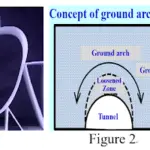The concept of measuring the energy efficiency of windows is like peering through a slightly fogged-up pane – it’s not always crystal clear at first glance. Windows aren’t just mere openings; they’re vital elements that contribute to your home’s coziness, the inflow of natural sunlight, and the prevention of pesky drafts.
But fear not! We’re here to illuminate the path for you. Whether you’re considering a DIY energy upgrade or simply intrigued by the available choices, keep reading to unveil a comprehensive guide that unravels everything you need to know about achieving energy-efficient windows.

Cracking the Code: The Window Energy Rating
Imagine a world where you assess windows as you would energy-efficient appliances, with an intuitive rating system – and that’s precisely what the UK offers. Think of it as an energy star for your window-shopping escapades. Behind this system stands the British Fenestration Rating Council (BFRC), the brainpower that assigns windows their energy efficiency grades.
From A++ to E, these grades indicate how well windows perform in terms of energy efficiency. The A++ rating is like a high-five for your efforts in choosing eco-friendly options. The beauty of it all is that you don’t need to delve into intricate details; focus on the overall grade. It’s your compass for gauging the efficiency of those windows.
Also Read: Window Maintenance And Care: 7 Insider Tips
U-Value: The Guardian of Heat
Imagine the U-value as the vigilant protector against heat loss. The lower this number, the more adept your window is at retaining warmth within your abode. While the BFRC rating encompasses multiple factors such as air leakage and solar heat, the U-value focuses solely on safeguarding your space from temperature fluctuations.
When perusing your window options, make it a habit to consider both ratings. Picture two A+ rated windows – one might boast a lower U-value, signaling superior heat insulation.
Window Frame Wonders
Just as the right frame enhances an artwork, the material of your window frame holds the key to energy efficiency. Take wood and uPVC, for instance. Wood is nature-friendly, yet demands attention. On the flip side, uPVC flaunts remarkable insulation capabilities but takes a toll on the environment.
But wait, there’s more! Metal frames and composite alternatives step onto the stage too. They strike a balance between performance and aesthetics, although they might be slightly more elusive and entail a higher cost.
Like Us on Facebook!
Also Read: 6+ Trending types of Windows for 2018
Subscribe Us on YouTube!
Double Glazing: The Dynamic Duo
Think of double glazing as a superhero duo – two glass panes united by a gap. This unassuming gap packs a mighty punch – infused with argon gas, it staunchly prevents heat from escaping, muffles outside noise, and enhances security.
Triple Glazing: Layers of Luxury, but at a Price
Triple glazing elevates the game with an extra glass layer. It’s akin to constructing a fortress against noise intrusion, and it even curtails condensation. However, while it shines in noisy environments, it might not be the everyday champion of energy conservation due to its higher cost.
Eco-Friendly Innovations on the Horizon
The window landscape is evolving. Fresh materials like composite are emerging, presenting a blend of efficiency and style. Smart windows that tint like magic and even generate solar power might eventually become the standard.
Solar Heat: The Stealthy Energy Saver
Windows don’t merely insulate; they’re also adept at capturing the sun’s warmth. The strategy is simple: welcome sunlight when it’s low, and shield against it when it’s high. It’s a natural thermostat of sorts.
Windows & EPC Assessment
Energy Performance Certificate (EPC) certification and assessment serve as vital tools in gauging a building’s energy efficiency and environmental impact. These assessments provide a clear indication of how energy-efficient a property is, assigning it a rating from A (most efficient) to G (least efficient).
When it comes to windows, they play a crucial role in the EPC assessment by influencing the overall energy performance of the building. Windows are evaluated based on factors like their insulation properties,
U-values, and whether they allow for effective solar gain. The type of glazing, frame material, and overall design all contribute to the window’s impact on the building’s energy efficiency rating.
By addressing window energy efficiency, properties can improve their EPC ratings, reduce energy consumption, and ultimately contribute to a more sustainable built environment.
If you want some more information, you can contact a reputed Commercial EPC assessor.
Small Steps, Big Gains
If an entire window overhaul isn’t on your agenda, fret not. Thick curtains, plugging gaps, and window film offer straightforward ways to amplify your energy efficiency game.
And so, the curtain falls on this exploration of energy-efficient windows. Now equipped with this knowledge, venture forth and shop smart, armed with the ability to create a cozier home and more budget-friendly energy bills!
















